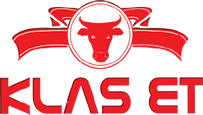Content
Show the process costs for each process and the total cost of the finished product. A company may state that 10% of input will be normal loss of process A. Suppose, input in process A is 100 units, normal loss of process A should be 10 units and normal production of process A should be 90 units. (b) Determine the total accumulated cost relating to the process, i.e., cost transferred + cost introduced in the process (material, labour and proportionate share of overhead) – scrap value of normal loss. From the above statement it is clear that element-wise details of cost should be collected and it should be divided by number of equivalent units to arrive at cost per unit for each element.
- The quantity as well as the values of these losses can be known through the process costing.
- Soap Production Company’s Mixing department shows the following information for the 1,000 units of product remaining in work in process at the end of the period.
- In this article, you will learn how to apply process costing to calculate the cost per unit of finished goods and the value of work in progress inventory.
- Including non-production costs will arbitrarily increase each item’s cost; this also increases the consumer product price.
- It accumulates cost from each process or department and allocates them to the individual products produced.
(i) To calculate the cost of production of each process and each unit in the different processes. Case 3 – Process costing with both some beginning and some ending work-in-process inventory of SG-40. This case adds more complexity and illustrates the effect of weighted-average and first-in, https://www.apzomedia.com/bookkeeping-startups-perfect-way-boost-financial-planning/ first-out (FIFO) cost flow assumptions on cost of units completed and cost of work-in-process inventory. The standard costing approach is similar to weighted average costing. The main different is that standard costs are planned or budgeted costs, rather than actual, realised costs.
Better Inventory Management
Costs usually go through a series of steps in the allocation process. Costs are pooled by type or activity, and allocated to production using different cost drivers. By comparing standard and actual
costs per unit we can reduce waste, increase productivity, and manager resources more carefully.
Thus, equivalent units are to be calculated separately for each cost element. Equivalent units are not physical units but they are abstract units used to facilitate calculation of product costs and performance. The main advantage of using a process costing system is that it provides managers with information they can use to improve the efficiency of the production process. For example, if the company produces 100 widgets at a cost of $10 per widget, the manager knows that each widget costs $0.10 in direct materials, $0.50 in direct labor, and $0.40 in overhead. This information can be used to reduce the cost per widget by improving the efficiency of the production process. Hershey likely uses a process costing system since it produces identical units of product in batches employing a consistent process.
2.1 Equivalent Units
The widgets then move to the trimming department for further work, and these per-unit costs will be carried along with the widgets into that department, where additional costs will be added. With process costing, companies track the flow of costs from department to department, rather than tracking costs for each individual item. Each department adds direct labor and manufacturing overhead costs, plus the cost of any raw materials it uses. Companies may use separate work-in-process inventory accounts for each department or stage in the process. If the output products are homogeneous, that is, the units of output are relatively indistinguishable from one another, it may be beneficial to use process costing. If the output products are of low value, meaning each individual unit of output is not worth much, it may be beneficial to use process costing.
This method provides a more accurate picture of the cost of production than the standard cost in industries where the cost of inputs fluctuates frequently. Process costing is an important accounting method for manufacturers that make large volumes of identical items, such as companies in the food processing, oil and chemicals industries. For these companies, it can be difficult or impossible to directly allocate costs to each item as it moves through the manufacturing process. Process costing enables companies to estimate item costs by adding up the expenses of each step in the manufacturing process, then dividing by the number of items.
What is Process Costing – Meaning and Concept
Transferred-in costs are treated as if they are a separate type of direct material added at the beginning of the process. That is, transferred-in costs are always 100% complete as of the beginning of the process in the new department. Many process-costing systems have two or more departments or processes in the production cycle.
Direct materials are the raw materials used in the manufacturing process. For example, paint ingredients would be direct materials as they are materials needed to make a company’s products. Direct labor is the cost of labor required to produce the product. Conversion costs are the indirect costs incurred bookkeeping for startups in converting direct materials into finished products, such as factory overhead. Cost drivers are the factors that cause changes in the total cost of producing a good or service. Costs are assigned first to production departments and then to units of output as they move through the departments.
Business in Action 4.1
The expected cost is then compared to actual costs, and the difference is charged to a variance account. Initial materials are the starting materials that are inserted in process one. They are the materials which take the biggest percentage of the product being created or produced. Initial materials are always introduced in level one of the processes and are said to be 100% complete when it comes to the level of completion as far as work in progress is concerned.

